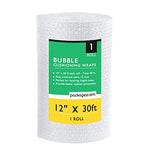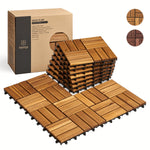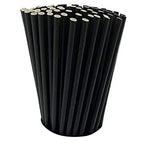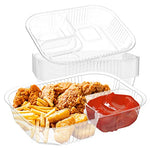You have no items in your shopping cart.
Trash bags are an essential part of our daily lives, helping us keep our homes and surroundings clean and organized. But have you ever wondered how these versatile bags are made? In this comprehensive guide, we will dive deep into the manufacturing process of trash bags, uncovering the materials used, the techniques employed, and the environmental impact of their production. Join us on this fascinating journey as we explore the intricate process of how trash bags are made.
Table of Contents
-
Understanding Trash Bags: An Overview
- What are trash bags used for?
- The importance of high-quality trash bags
-
Materials Used in Trash Bag Manufacturing
- The role of polyethylene
- Different types of polyethylene
- Recycled materials and sustainability
-
The Extrusion Process: Turning Raw Materials into Trash Bags
- Extrusion: The foundation of bag production
- Blown film extrusion vs. cast film extrusion
- Heat, pressure, and the art of shaping plastic
-
Printing and Customization of Trash Bags
- Adding aesthetics and branding
- Techniques used for printing
- Customization options for different purposes
-
Sealing and Cutting: Giving Shape to Trash Bags
- The importance of strong seals
- Cutting techniques for various bag types
-
Quality Control: Ensuring Durability and Reliability
- Testing the strength and puncture resistance
- Compliance with industry standards
-
Sustainability and Environmental Considerations
- Recycling and reducing waste
- Biodegradable and compostable alternatives
- Innovations in eco-friendly trash bag production
-
The Future of Trash Bags: Trends and Innovations
- Advancements in material technology
- Smart trash bags and waste management systems
Understanding Trash Bags: An Overview
What are trash bags used for?
Trash bags, also known as garbage bags or bin liners, serve a vital purpose in managing household and commercial waste. They provide a convenient and hygienic way to collect and dispose of garbage. Trash bags are used in homes, offices, hospitals, restaurants, and various other settings where waste management is necessary. They help contain the waste, prevent odors, and make it easier to transport and dispose of garbage.
The importance of high-quality trash bags
When it comes to trash bags, quality matters. A high-quality bag ensures durability and reliability, preventing leaks, tears, and spills. Imagine the inconvenience of a trash bag tearing open while you're carrying it to the dumpster! Choosing a reliable brand and a well-constructed bag minimizes the risk of such mishaps and contributes to a cleaner and more efficient waste management system.
Materials Used in Trash Bag Manufacturing
Trash bags are primarily made from a versatile plastic called polyethylene. Let's take a closer look at the role of polyethylene and explore the different types used in the manufacturing process.
The role of polyethylene
Polyethylene is a thermoplastic polymer that is derived from petroleum. It is widely used in various industries due to its excellent durability, flexibility, and resistance to moisture and chemicals. In trash bag manufacturing, polyethylene provides the essential properties required to withstand the weight and contents of the waste, ensuring that the bag remains intact throughout its use.
Different types of polyethylene
In the production of trash bags, different types of polyethylene can be used, each offering specific characteristics suited to various applications. The two main types are:
-
Low-density polyethylene (LDPE): LDPE is commonly used in the production of trash bags due to its flexibility and strength. It provides excellent puncture resistance and is ideal for handling heavier loads.
-
Linear low-density polyethylene (LLDPE): LLDPE combines the flexibility of LDPE with improved tensile strength. It is often used for trash bags that require increased tear resistance and stretchability.
Recycled materials and sustainability
With growing concerns about environmental sustainability, manufacturers are increasingly incorporating recycled materials into their trash bag production. Recycled polyethylene can be obtained from post-consumer or post-industrial sources, reducing the demand for new raw materials and diverting waste from landfills.
Moreover, some companies have developed innovative technologies that enable the production of trash bags using biodegradable materials, such as plant-based plastics or compostable polymers. These alternatives aim to reduce the environmental impact of traditional plastic trash bags and promote a more sustainable waste management system.
The Extrusion Process: Turning Raw Materials into Trash Bags
The manufacturing of trash bags primarily involves the extrusion process, where raw materials are transformed into continuous plastic films. Let's explore the intricacies of this crucial stage in trash bag production.
Extrusion: The foundation of bag production
Extrusion is a manufacturing process that involves melting plastic and shaping it into a continuous profile or film. In trash bag production, the extrusion process begins with feeding plastic pellets, typically polyethylene, into a hopper. The pellets are then heated, creating a molten polymer that can be molded.
Blown film extrusion vs. cast film extrusion
Two primary techniques are used in the extrusion process for trash bag production: blown film extrusion and cast film extrusion.
-
Blown film extrusion: In this method, the molten polymer is forced through a circular die, forming a tube-like structure called a "bubble." The bubble is then inflated, simultaneously stretching and cooling the plastic film. The tube is later collapsed and flattened, resulting in a flat film that can be further processed into bags.
-
Cast film extrusion: Unlike blown film extrusion, cast film extrusion involves casting the molten polymer onto a chilled roll or conveyor belt. The plastic film solidifies as it comes into contact with the cooled surface, resulting in a flat film with uniform thickness. This method allows for precise control over the film properties and is often used to produce thinner, high-clarity trash bags.
Heat, pressure, and the art of shaping plastic
During the extrusion process, heat and pressure play a crucial role in shaping the plastic film. The temperature and pressure are carefully controlled to ensure the desired properties, such as thickness, strength, and clarity. The extruded film passes through a series of cooling rollers or air rings, which solidify the plastic and prepare it for the subsequent stages of bag production.
Printing and Customization of Trash Bags
Trash bags not only serve a functional purpose but can also be customized and branded for various applications. Let's explore the techniques used for printing and the customization options available in the manufacturing of trash bags.
Adding aesthetics and branding
Printing on trash bags allows manufacturers and businesses to add visual appeal and branding elements to their products. Printed trash bags can feature logos, slogans, instructions, or eye-catching designs, making them suitable for retail, promotional, or special event purposes.
Techniques used for printing
Several printing techniques are commonly employed in the manufacturing of trash bags:
-
Flexographic printing: Flexographic printing is a popular choice for trash bags due to its versatility and cost-effectiveness. This technique utilizes flexible rubber or polymer plates to transfer ink onto the plastic film. It is suitable for simple designs and large-scale printing.
-
Gravure printing: Gravure printing involves etching the desired design onto a cylinder, which is then coated with ink. The ink is transferred from the recessed areas of the cylinder onto the plastic film. Gravure printing offers excellent precision and is often used for high-quality prints or fine details.
Customization options for different purposes
Trash bags can be customized in various ways to cater to specific needs:
-
Color options: Trash bags are available in a wide range of colors, allowing users to differentiate between waste streams or match the aesthetics of their surroundings.
-
Size variations: Trash bags come in different sizes to accommodate various bin capacities and waste volumes. From small kitchen bags to large contractor bags, there is a size suitable for every purpose.
-
Special features: Some trash bags are designed with additional features, such as drawstrings, handles, or odor-control properties, to enhance convenience and functionality.
By offering customization options, manufacturers cater to diverse consumer preferences and provide tailored solutions for specific waste management requirements.
Sealing and Cutting: Giving Shape to Trash Bags
Once the plastic film has been extruded and printed, it goes through the sealing and cutting process, where it is transformed into individual trash bags. Let's explore the importance of strong seals and the cutting techniques employed in this stage of production.
The importance of strong seals
Strong seals are essential to ensure that the trash bags do not split or tear during use. Proper sealing techniques provide structural integrity and prevent leaks, enabling users to dispose of waste without worry. The type of seal used depends on the desired bag design and its intended purpose.
Cutting techniques for various bag types
Trash bags can be produced in different shapes and sizes, requiring specific cutting techniques to achieve the desired form:
-
Flat bags: Flat bags are the most common type and are typically used in households and offices. They are cut into individual pieces from the continuous plastic film, and the bottom and sides are sealed to form a bag shape.
-
Gusseted bags: Gusseted bags have expandable sides, allowing for increased volume and capacity. They are created by folding the plastic film and sealing the edges, resulting in a bag with a triangular or pleated shape when opened.
-
Star-sealed bags: Star-sealed bags are designed for enhanced strength and leakage prevention. They are produced by folding and sealing the bottom of the bag in a star pattern, which eliminates weak points and allows for better weight distribution.
By employing different cutting techniques, manufacturers cater to various customer needs and create trash bags suitable for different applications and waste volumes.
Quality Control: Ensuring Durability and Reliability
To ensure the durability and reliability of trash bags, stringent quality control measures are implemented throughout the manufacturing process. Let's explore the testing procedures and industry standards used to maintain the highest quality standards.
Testing the strength and puncture resistance
Trash bags undergo rigorous testing to assess their strength, puncture resistance, and load-bearing capacity. Common quality control tests include:
-
Tensile strength testing: This test measures the maximum tensile force a bag can withstand before breaking. It helps determine the bag's overall strength and durability.
-
Puncture resistance testing: Trash bags are subjected to puncture tests using standardized equipment to assess their resistance against sharp objects, preventing accidental tears or leaks during use.
Compliance with industry standards
Trash bag manufacturers adhere to industry standards and certifications to ensure the quality and safety of their products. Some prominent certifications include:
-
ASTM D6400: This certification indicates that the trash bags are compostable and meet the standards set by the American Society for Testing and Materials (ASTM).
-
ISO 9001: The ISO 9001 certification signifies that the manufacturer has implemented a quality management system that meets international standards, ensuring consistent quality and customer satisfaction.
By maintaining strict quality control measures and complying with industry standards, manufacturers strive to deliver trash bags that meet the expectations of consumers and provide a reliable waste management solution.
Sustainability and Environmental Considerations
As concerns about environmental sustainability grow, the manufacturing of trash bags has evolved to address these issues. Let's explore the various sustainability initiatives and alternatives aimed at reducing waste and promoting a greener future.
Recycling and reducing waste
One significant step towards sustainability is the incorporation of recycled materials in trash bag production. By utilizing post-consumer or post-industrial recycled polyethylene, manufacturers reduce the reliance on virgin plastic and minimize waste sent to landfills. This not only conserves resources but also reduces the carbon footprint associated with the production of new plastic.
Furthermore, efforts are being made to reduce the overall plastic content of trash bags without compromising strength and functionality. Lightweighting, a technique that involves using thinner but still durable films, helps reduce the amount of plastic used in each bag, leading to material savings and decreased environmental impact.
Biodegradable and compostable alternatives
In response to the environmental concerns surrounding traditional plastic, manufacturers have developed biodegradable and compostable alternatives to standard trash bags. These bags are made from plant-based materials, such as cornstarch or polylactic acid (PLA), which can break down naturally in composting facilities or other suitable environments.
It's important to note that biodegradable and compostable bags require specific conditions for proper decomposition. They should be disposed of correctly, either in industrial composting facilities or as directed by local waste management guidelines, to maximize their environmental benefits.
Innovations in eco-friendly trash bag production
Innovative technologies and materials continue to emerge in the quest for more eco-friendly trash bags. Some notable advancements include:
-
Bio-based plastics: Researchers are exploring the use of bio-based plastics derived from renewable resources, such as sugarcane or algae. These materials have the potential to reduce the reliance on fossil fuels and offer a more sustainable alternative to traditional plastic.
-
Oxo-biodegradable plastics: Oxo-biodegradable plastics contain additives that accelerate the degradation process when exposed to oxygen and UV light. These bags break down into smaller fragments over time, facilitating microbial decomposition and reducing their environmental impact.
-
Closed-loop recycling: Closed-loop recycling systems aim to create a circular economy by collecting used trash bags and recycling them into new bags. This approach helps minimize waste generation and promotes the efficient use of resources.
By embracing these innovations and sustainable practices, the trash bag industry is moving towards a greener future, striving to balance the convenience of waste management with environmental stewardship.
The Future of Trash Bags: Trends and Innovations
As technology advances and sustainability takes center stage, the future of trash bags holds exciting possibilities. Let's explore some of the emerging trends and innovations that could shape the industry in the years to come.
Advancements in material technology
Material science continues to evolve, leading to the development of advanced polymers and composite materials with enhanced properties. These new materials may offer improved strength, puncture resistance, and environmental characteristics, paving the way for more durable and sustainable trash bags.
Moreover, research and development efforts are focused on creating materials that are easier to recycle or have a reduced impact on the environment. By exploring novel formulations and manufacturing techniques, manufacturers aim to produce trash bags that are both high-performing and eco-friendly.
Smart trash bags and waste management systems
The rise of smart technology has the potential to revolutionize waste management systems. Smart trash bags embedded with sensors and RFID (radio-frequency identification) tags could enable real-time monitoring of waste levels, optimizing collection schedules, and reducing inefficiencies. This technology could help cities and businesses streamline their waste management processes and promote sustainable practices.
Circular economy and extended producer responsibility
The concept of a circular economy, where waste is minimized, and resources are reused or recycled, is gaining traction. Trash bag manufacturers are exploring strategies to implement extended producer responsibility (EPR) programs, taking responsibility for the entire lifecycle of their products. This includes designing bags for recyclability, establishing collection and recycling infrastructure, and promoting consumer awareness and participation.
By embracing the principles of the circular economy and adopting EPR initiatives, the trash bag industry can contribute to a more sustainable waste management ecosystem.
FAQs about Trash Bag Production
1. How are trash bags made? Trash bags are made through the extrusion process, where plastic pellets are melted and shaped into continuous films. These films are then printed, sealed, and cut into individual bags.
2. What are trash bags made of? Trash bags are typically made of polyethylene, a type of plastic. There are two common types used: low-density polyethylene (LDPE) and linear low-density polyethylene (LLDPE).
3. Are trash bags recyclable? Yes, many trash bags can be recycled, especially those made from LDPE or LLDPE. However, it's important to check with your local recycling facilities as some might not accept plastic bags due to sorting and processing challenges. Additionally, recycling is most effective when bags are clean and free from contaminants.
4. Can I compost trash bags? Some trash bags are specifically designed to be compostable, meaning they can break down in composting facilities or suitable environments. However, not all trash bags are compostable, so it's essential to check the packaging or product information for specific guidelines.
5. What is the difference between biodegradable and compostable trash bags? Biodegradable trash bags can break down naturally over time, but the process may take longer and may not occur under all environmental conditions. Compostable trash bags, on the other hand, are designed to break down into organic matter in composting facilities, where specific temperature, moisture, and microbial conditions exist.
6. Are there eco-friendly alternatives to traditional plastic trash bags? Yes, there are several eco-friendly alternatives available, such as trash bags made from plant-based plastics or compostable materials. These alternatives aim to reduce the environmental impact of traditional plastic and promote more sustainable waste management practices.
Conclusion
Trash bags are an essential part of our daily lives, providing a convenient and hygienic solution for waste management. The manufacturing process involves extrusion, printing, sealing, and cutting, ensuring the production of durable and reliable bags. With the increasing focus on sustainability, the industry is exploring recycled materials, biodegradable options, and innovative technologies to create more eco-friendly trash bags.
By understanding how trash bags are made and considering the environmental implications, we can make informed choices and contribute to a greener future. As consumers, it's crucial to support manufacturers who prioritize sustainability and embrace the principles of the circular economy. Together, we can work towards a more sustainable waste management system and reduce our impact on the environment.








